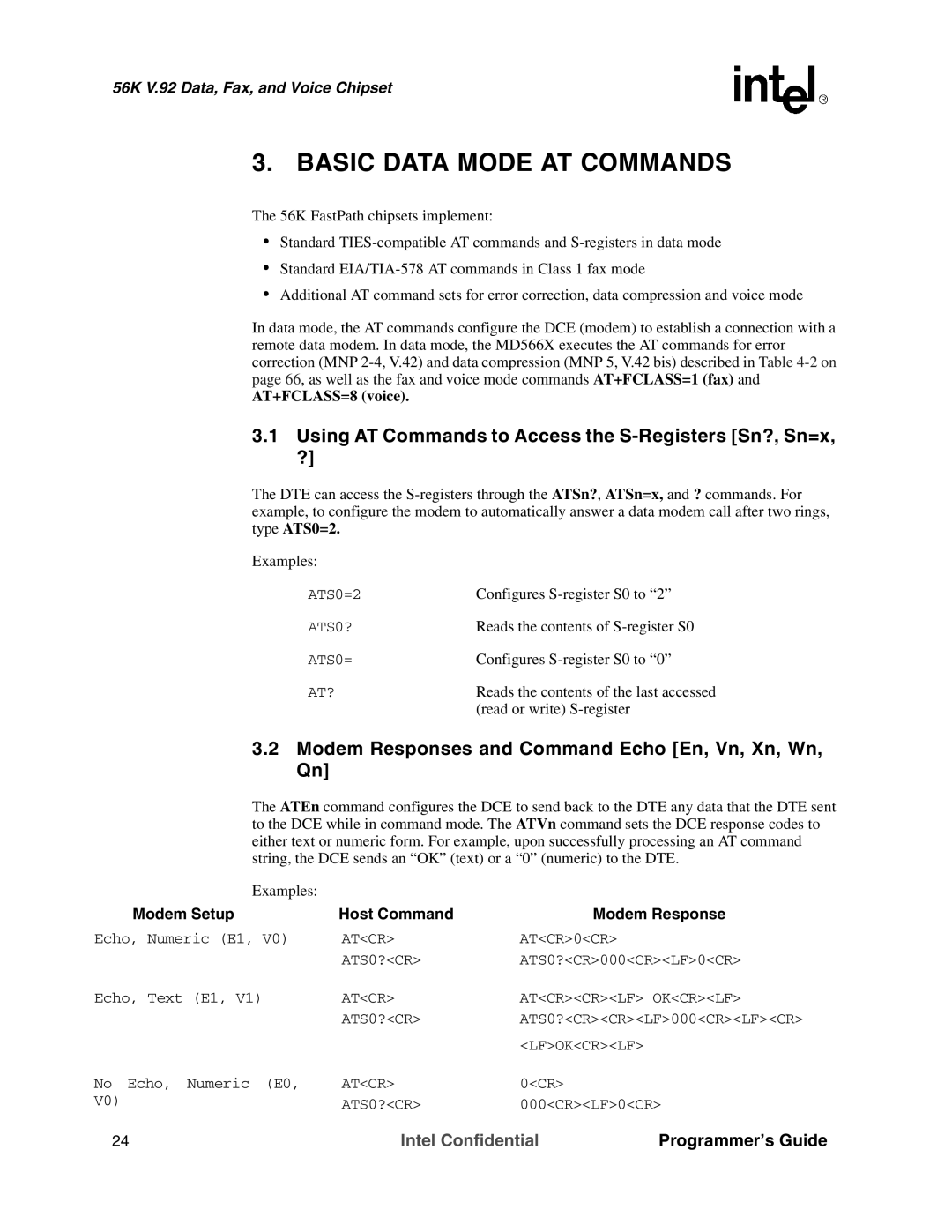56K V.92 Data, Fax, and Voice Chipset
3. BASIC DATA MODE AT COMMANDS
The 56K FastPath chipsets implement:
•Standard
•Standard
•Additional AT command sets for error correction, data compression and voice mode
In data mode, the AT commands configure the DCE (modem) to establish a connection with a remote data modem. In data mode, the MD566X executes the AT commands for error correction (MNP
AT+FCLASS=8 (voice).
3.1Using AT Commands to Access the S-Registers [Sn?, Sn=x, ?]
The DTE can access the
Examples: |
|
ATS0=2 | Configures |
ATS0? | Reads the contents of |
ATS0= | Configures |
AT? | Reads the contents of the last accessed |
| (read or write) |
3.2Modem Responses and Command Echo [En, Vn, Xn, Wn, Qn]
The ATEn command configures the DCE to send back to the DTE any data that the DTE sent to the DCE while in command mode. The ATVn command sets the DCE response codes to either text or numeric form. For example, upon successfully processing an AT command string, the DCE sends an “OK” (text) or a “0” (numeric) to the DTE.
Examples: |
|
|
Modem Setup | Host Command | Modem Response |
Echo, Numeric (E1, V0) | AT<CR> | AT<CR>0<CR> |
| ATS0?<CR> | ATS0?<CR>000<CR><LF>0<CR> |
Echo, Text (E1, V1) | AT<CR> | AT<CR><CR><LF> OK<CR><LF> |
| ATS0?<CR> | ATS0?<CR><CR><LF>000<CR><LF><CR> |
|
| <LF>OK<CR><LF> |
No Echo, Numeric (E0, | AT<CR> | 0<CR> |
V0) | ATS0?<CR> | 000<CR><LF>0<CR> |
24 | Intel Confidential | Programmer’s Guide |
